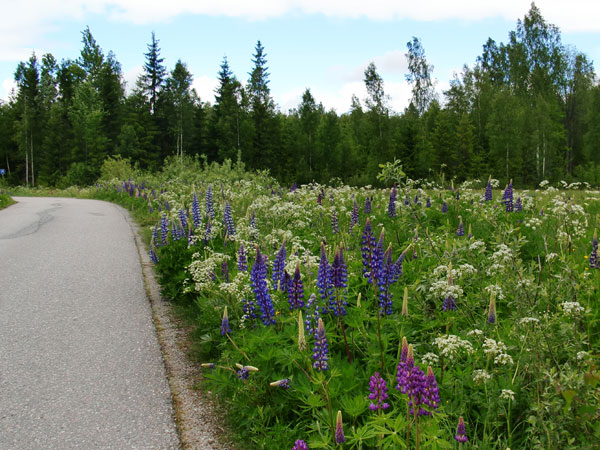Researchers at the Swedish National Road and Transport Research Institute, VTI, have compiled a report on non-native invasive plant species in Sweden and how they spread via transport systems.
An invasive species is a non-native animal or plant species that has been introduced into an environment, and become established, where it does not occur naturally. In the new environment, there is a risk the species will spread rapidly, for example, because it does not have any natural enemies.
“An invasive species can cause major problems for biological diversity and for industries such as fishing, forestry and agriculture, and can give rise to huge costs for society,” says Georg Tschan, researcher at VTI.

Lupin is an example of a non-native plant species often seen along roadsides in Sweden. Photo: Mostphotos
In February 2018, the government presented proposals for new legislation regarding invasive non-native species. The goal is to initiate powerful measures to counteract invasive species in Sweden. The proposed legislation will also ensure that Sweden fulfils the obligations stipulated in an EU regulation that came into force in 2015.
For invasive plant species, one of the most important means of spreading is via transport infrastructure. On behalf of the Swedish Transport Administration, VTI has reviewed international literature on this subject, identified needs for research, and recommended strategies for successful countermeasures.
“In transport-related environments, spreading occurs mostly through maintenance work and the movement of soils and other materials, especially at construction sites. Also, vehicles and the traffic flow itself are important contributors to invasive species’ spread, but further investigation is needed to establish to what extent this occurs and how it can be rectified,” says Georg Tschan.
New and more systematic studies in Scandinavia are needed to investigate how traffic and the operation and maintenance of transport infrastructure contribute to local spreading. Three species are presented and discussed in detail in the report: giant hogweed, garden lupin and ragweed.

Contact:
Georg Tschan
georg.tschan@vti.se
VTI, Sweden






Follow us: